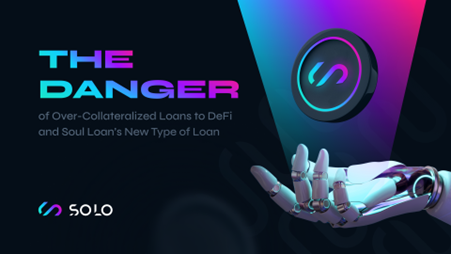Reason to trust

How Our News is Made
Strict editorial policy that focuses on accuracy, relevance, and impartiality
Ad discliamer
Morbi pretium leo et nisl aliquam mollis. Quisque arcu lorem, ultricies quis pellentesque nec, ullamcorper eu odio.
“If you don’t know how much leverage is in crypto, you don’t know anything about crypto, now matter how much you think you know.” These are the words of Dr Michael Burry, Founder of Scion Capital, once played by Christian Bale in The Big Short.
The regular Cassandra (as his Twitter handle goes) and arch-pessimist pronounced doom on the crypto markets due to excessive over-leverage. The doom he predicted didn’t quite transpire, but crypto has certainly taken a bit of a beating in summer 2022 as the markets rocked in the face of global headwinds.
Why Crypto Collapses So Quickly
Just why is crypto prone to utter and dramatic collapse? There are many reasons: it’s a speculative asset, retail stampedes like wildebeests from one day to the next, big players are almost certainly involved in manipulation, and crypto’s true utility is still very immature, and users are quick to lose faith. Not to mention security risks. It’s a volatile world out there, and will remain so until crypto has a few more years at least in the fiery forge of the markets. Even with these issues, cryptos volatility is way too extreme.
One of the key, less talked about reasons for crypto’s insanity is the amount of over-collateralized loans that exist in the DeFi space. In short, traders are ponying up their crypto as collateral in order to borrow more and more stablecoins and then using those stablecoins to take out even more long positions on the crypto market.
This behaviour temporarily boosts the overall market but ends up locking the liquidity in chain after chain of obligations. This composability, which has led to DeFi’s enormous growth off a relatively tiny user base (as a fraction of the whole population), also has the potential to cause cascading liquidations as funds are forfeit when positions fail and cause knock on effects through the entire ecosystem.
How Over-Collateralisation Work in DeFi
Over-collateralized loans are how DeFi lending and borrowing is done. In protocols like Maker, Compound, Aave and more, over-collateralization is the norm. Users must provide more capital than they are borrowing in order to take a loan. There are multiple reasons for doing this, but in short these power traders hope that the money they make off the investment will rise faster than the debt on the loan. It means they can invest the capital value of an asset (like ETH) without having to risk or liquidate their exposure to the asset itself. As long as they can pay the interest, they can have their cake and eat it.
In a bull market, such aggressive leveraging makes sense, and can be spectacularly effective. Yield farm strategies involving extensive multi-protocol borrowing maps have provided spectacular returns to those with the know-how, expertise, and dollop of luck to take advantage.
The Major Problem of Over-Collateralized Loans
There’s a major problem with these loans, however. As every trader is leveraged to the max, if the price of, say, Ethereum, drops dramatically – suddenly the collateral for the loans is worth significantly less than the loan amounts. This could bankrupt the protocol, so, as it approaches problematic levels, they liquidate the collateral as a defensive measure, leaving the trader stuck. They even incentivise liquidators to perform this activity for a bonus reward to ensure its efficiency, meaning collateral on loans is hawkishly watched, and immediately sacrificed if levels are breached
This has long been a major headache for traders, but with crypto’s volatile, it becomes a Sword of Damocles ready to decapitate the entire market. And, if an asset price is in free fall, liquidators may not even be active, as the rewards aren’t there.
A fast fall in price – so often in crypto – can thus bankrupt DeFi lenders, wiping out their users’ funds and the protocol’s treasury, in an instant. Even the biggest and the best suffer, as when MakerDAO suffered brutal cascading liquidations as a result of the price activity on March 12th 2020.
How Composability Makes Leverage Dangerous
It gets worse when you take into account DeFi’s interconnectivity. There are many protocols that rely on AAVE, for example, to provide its services, and interact with AAVE’s smart contracts. If AAVE’s price was to plummet and the protocol was to go bankrupt or have a liquidity crisis, then protocol’s that intertwine with its smart contracts could also go bust, even if their liquidity and their smart contracts were robust. The leverage in DeFi is therefore both a supercharged route to growth and a ticking time bomb to dissolution, due to the domino effect of overcollateralised loans.
Representative assets and LP tokens also cause problems. You may be using a representative asset to collateralise a loan that you are using to liquidity mine in a different protocol. If that representative asset suddenly loses value, say to a smart contract hack, then your loan collateral is immediately liquidated, or you may have to withdraw funds from the liquidity mine to provision capital to your position, perhaps hurting any chance for the invested protocol to grow.
How the SoLo Protocol Will Create Alternatives to Over-Collateralized Lending
The list goes on. Over-collateralized loans are a powerful way to make money grow, but they provide systemic risk to DeFi if they are the only type of loans a user can take. Moreover, they are useless to average retail users. What’s needed in DeFi is under-collateralized loans, more akin to a personal loan. These loans mimic the type of loans you see in TradFi. It’s what SoLo Protocol (SoLo), a decentralized, non-custodial protocol that issues these types of loans, will bring to the space.
The reason that over-collateralized loans are given out so freely is because no one checks who you are. Why would they? If I gave you $1000 as collateral and asked to loan $100, most would do it. There’s no risk. Under-collateralized loans are obviously different – the lender needs to be sure it’s paid back. In TradFi, lenders use credit scores. Newer systems like Credit Kudos used machine learning on open banking data. The Bank of England has already stated it ‘improves the screening of risky borrowers’, and that’s what SoLo will also do.
“We want to take advantage of the huge advance in machine learning in assessing credit data and mix it with on-chain analytics to create a new type of hybrid score – the SoLo score”, says Louis L, a co-founder at SoLo.
This mix of machine learning generated credit scores that have been built in TradFi to make web3 and DeFi lending decisions. As well as using this traditional marker, it will also use on-chain wallet activity to adjudicate whether to make a loan and to determine the creditworthiness of the lender.
“This merge of on-chain and off-chain data is being done by no one, SoLo is the first, and the impact on the space will be enormous,” states Tom G, another co-founder. “The SoLo score will be a totally unique score that the protocol uses to make our lending decisions.”
Baby, You Got Soul: How Solo Protocol Will Merge TradFi and DeFi
These types of ‘traditional’ loans coming on-chain has exciting ramifications. Users with good credit in TradFi or a positive history of transaction data assessed by machine learning can get crypto loans for investments in web3 easily. Users who struggle to get traditional loans but have excellent on-chain wallet metrics can access greater capital than one could otherwise. Issuing under-collateralized loans has the potential to create new wealth in the crypto markets and onboard millions more users into web3.
Although using traditional banking data sounds scary, it actually makes a ton of sense. There are already robust systems for working out who to lend to in the traditional finance sector that have used machine learning on transaction data – why not use it to make web3 a better place. That, precisely, is what SoLo is doing. Their beta product is now live on their website, so head on over, see your SoLo score, and explore the new horizon in consumer credit.


























